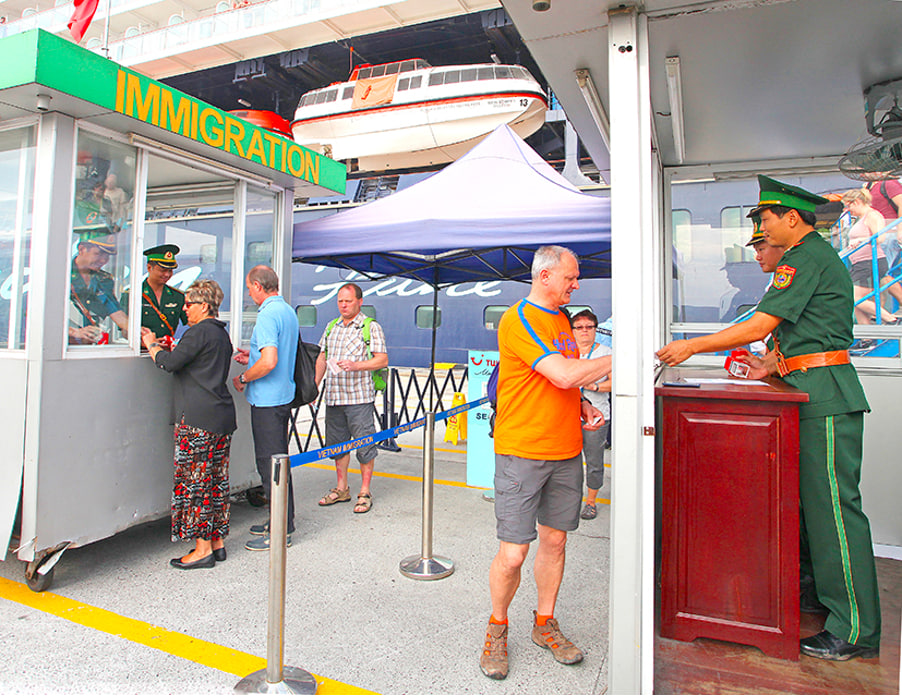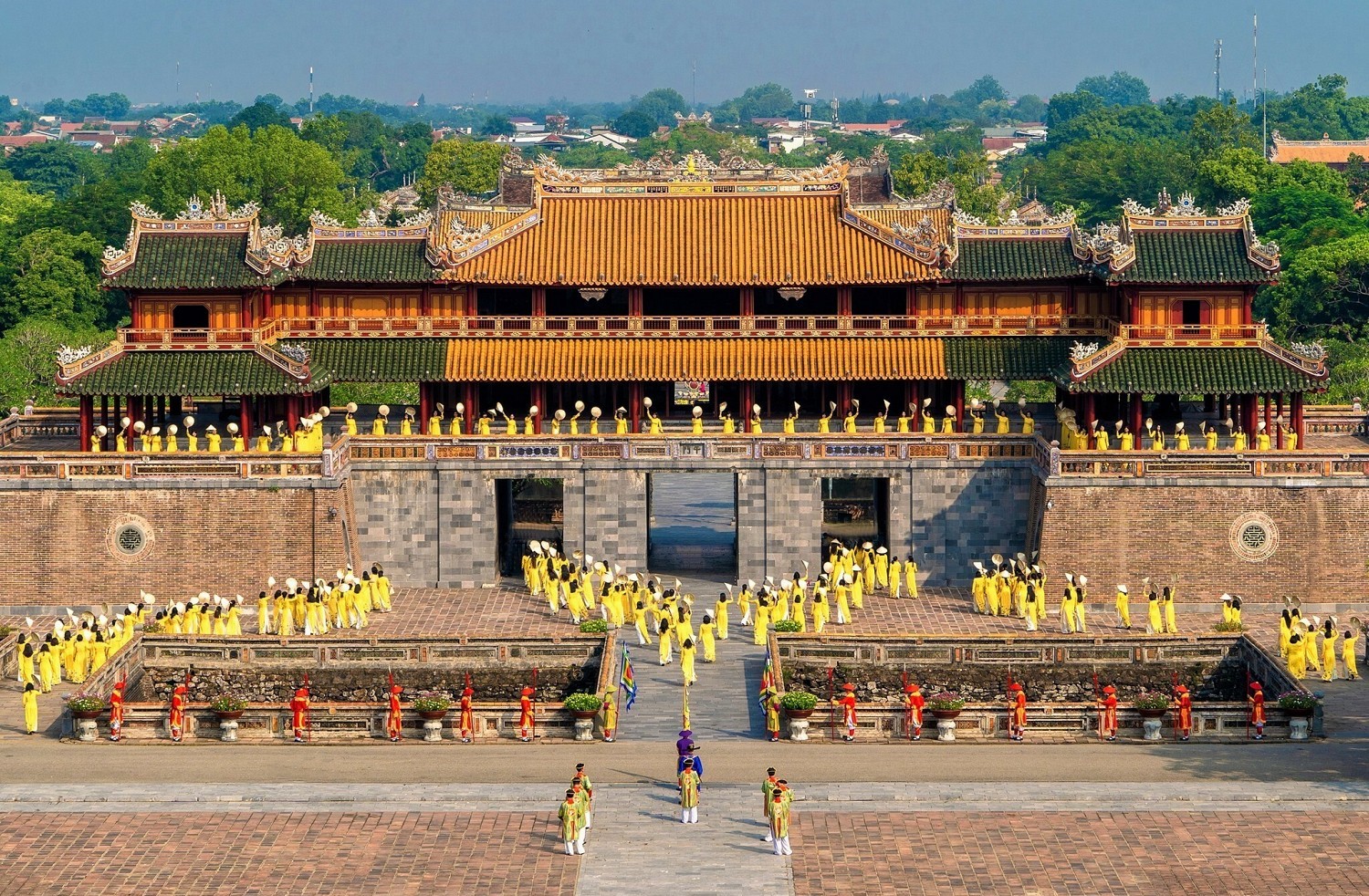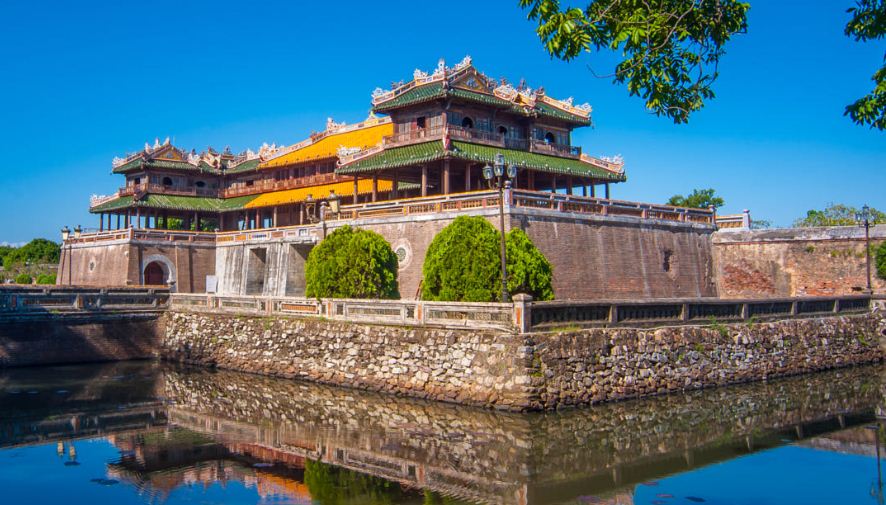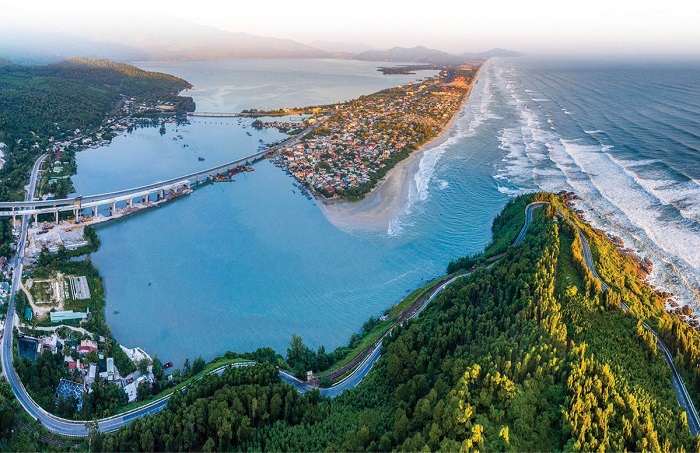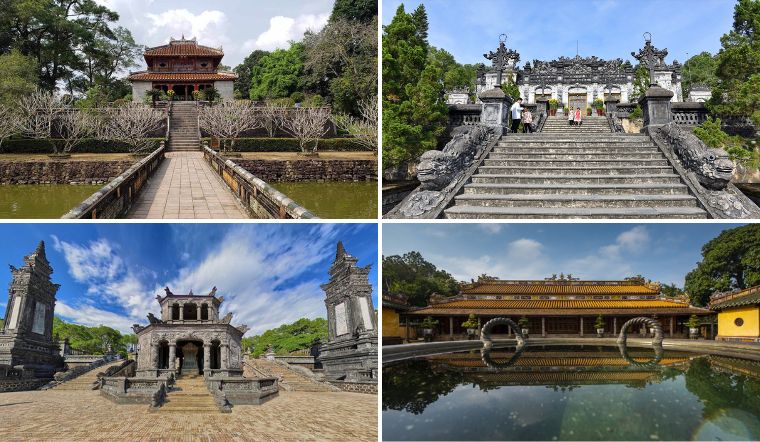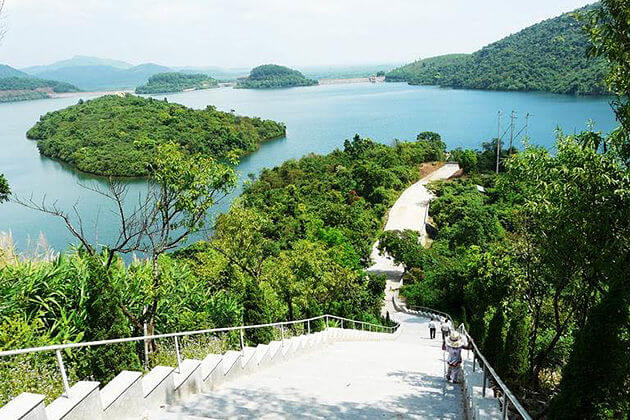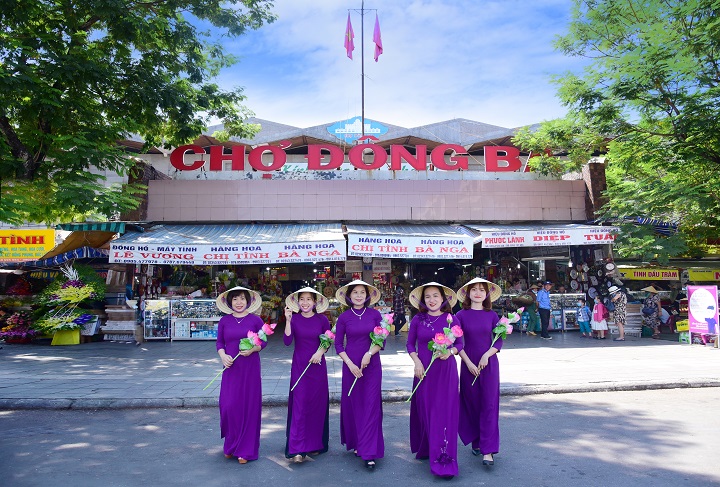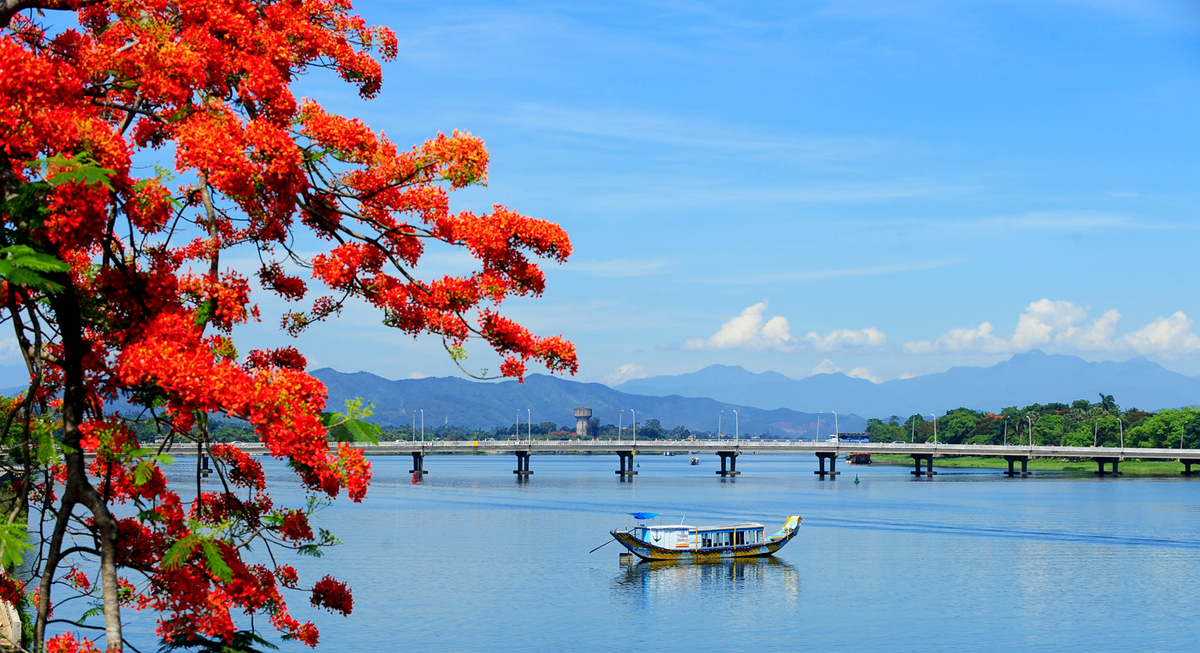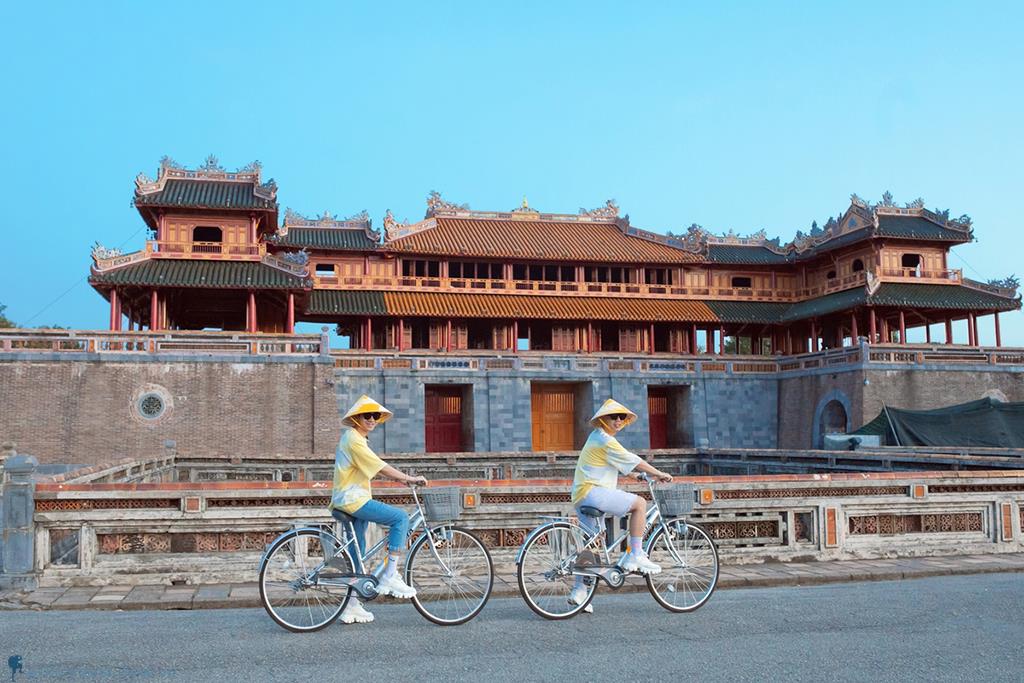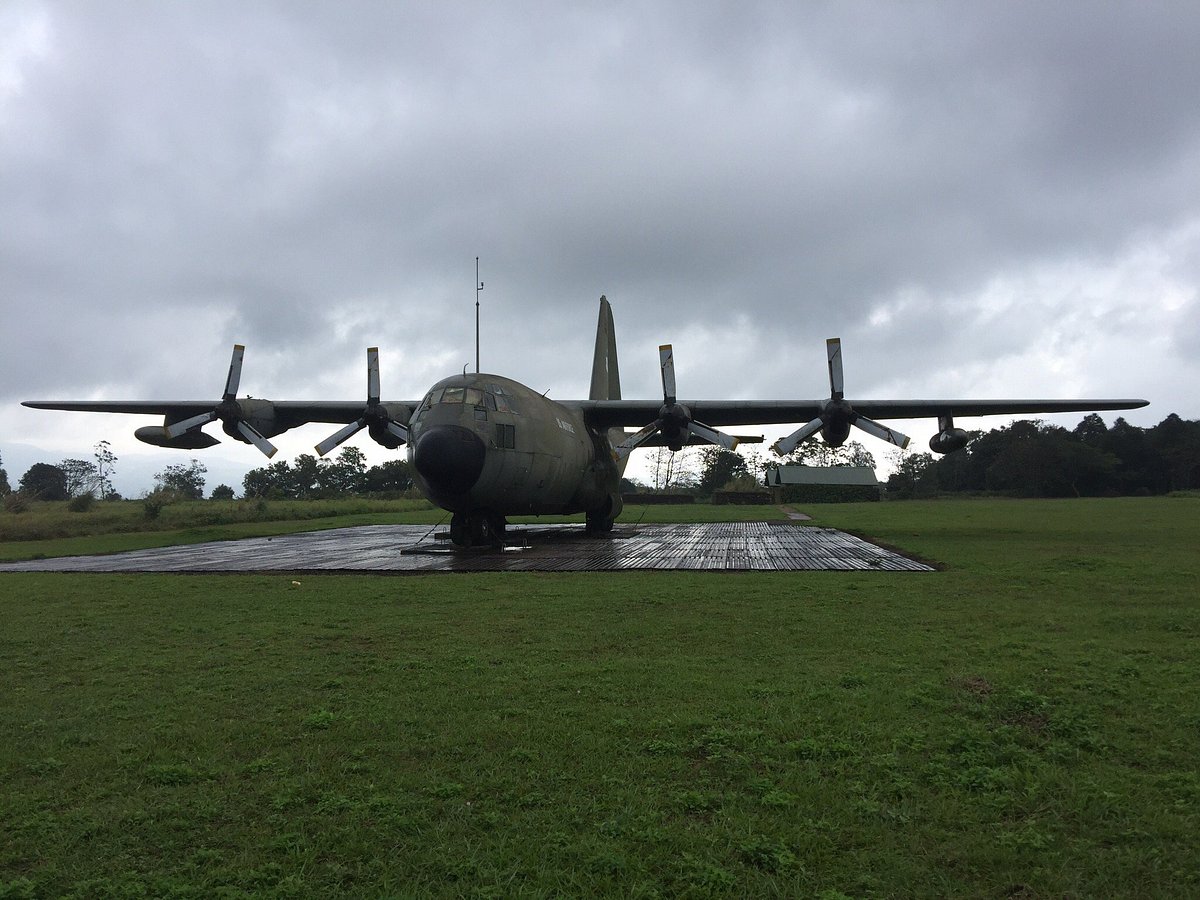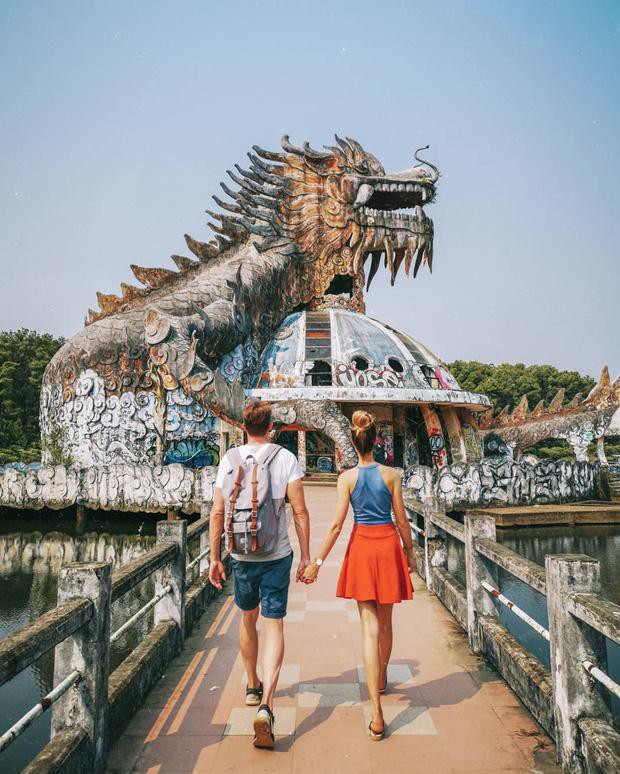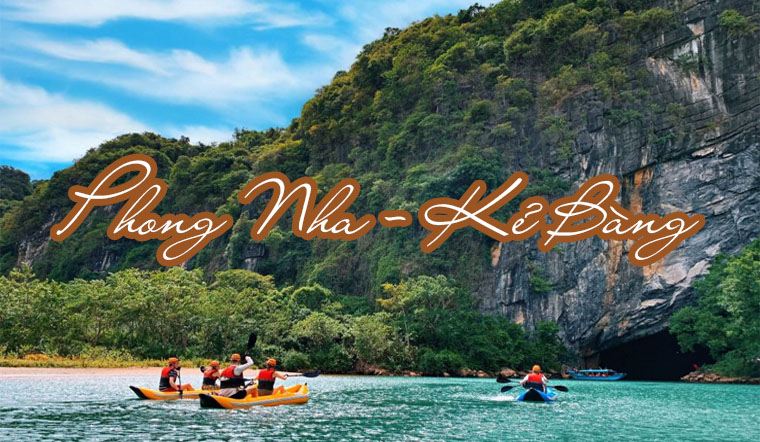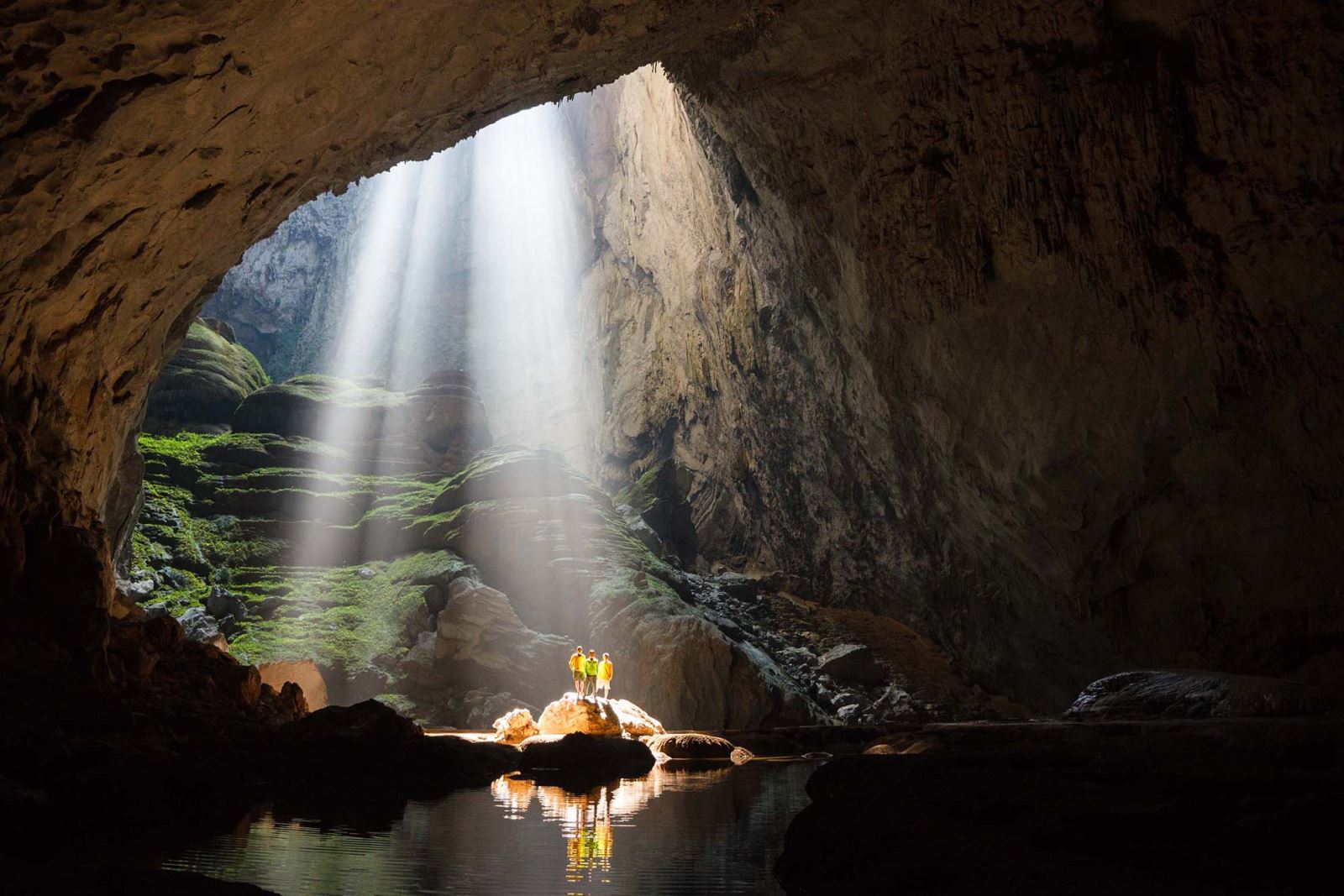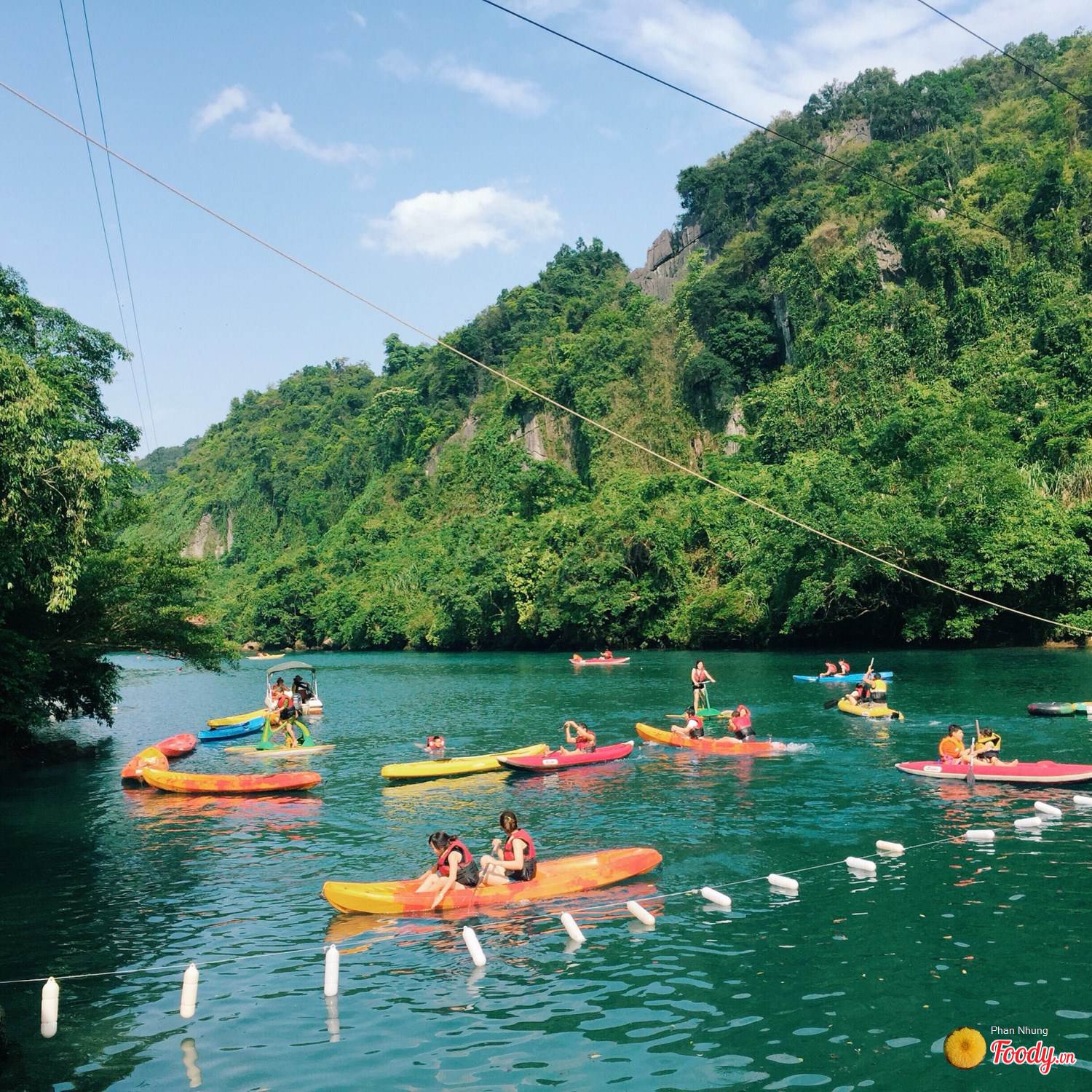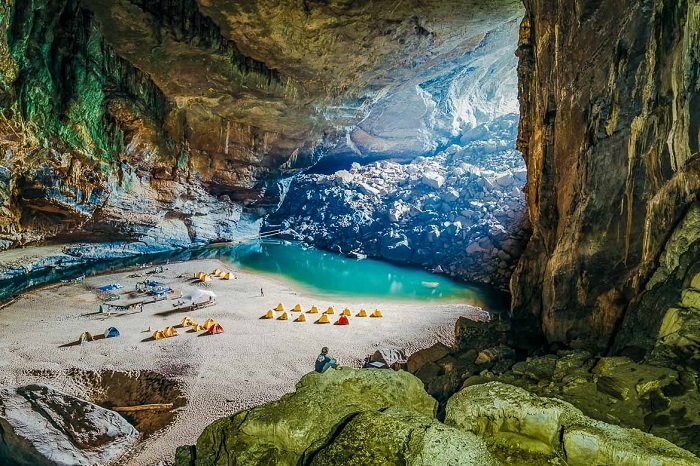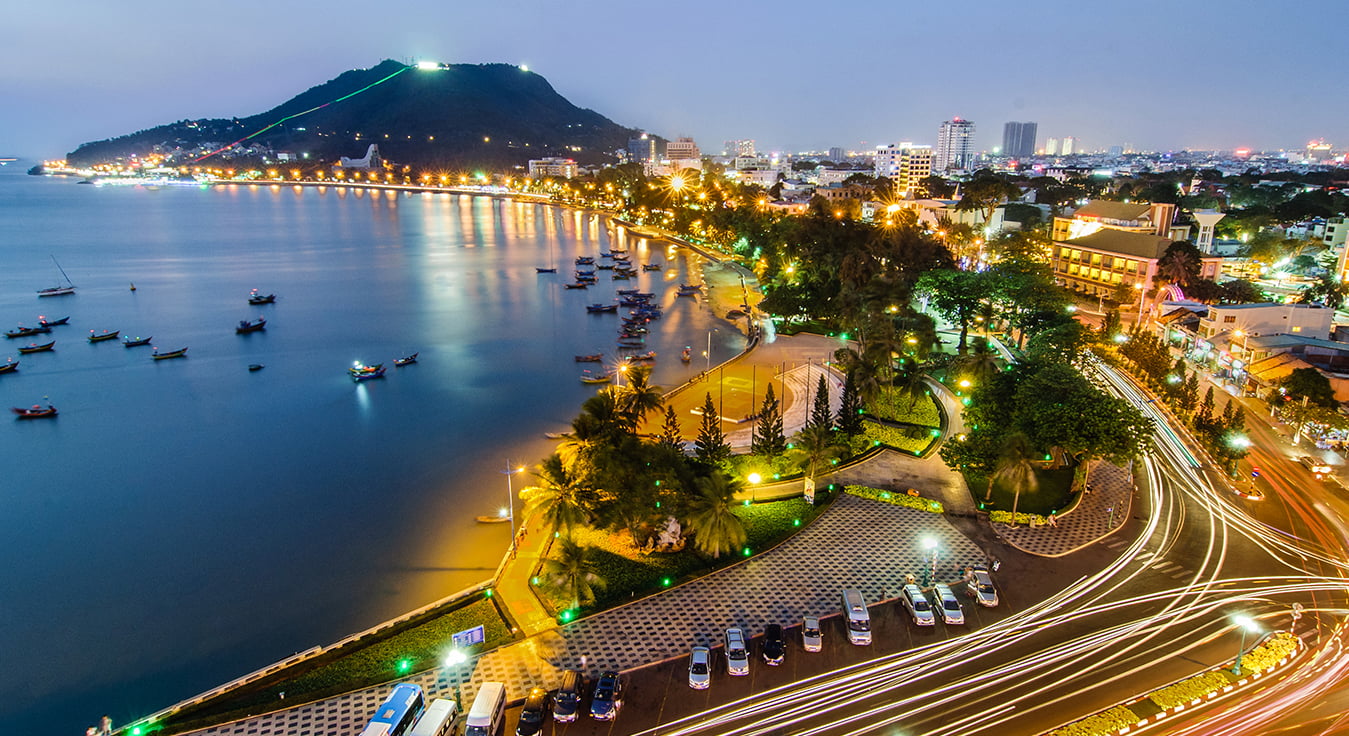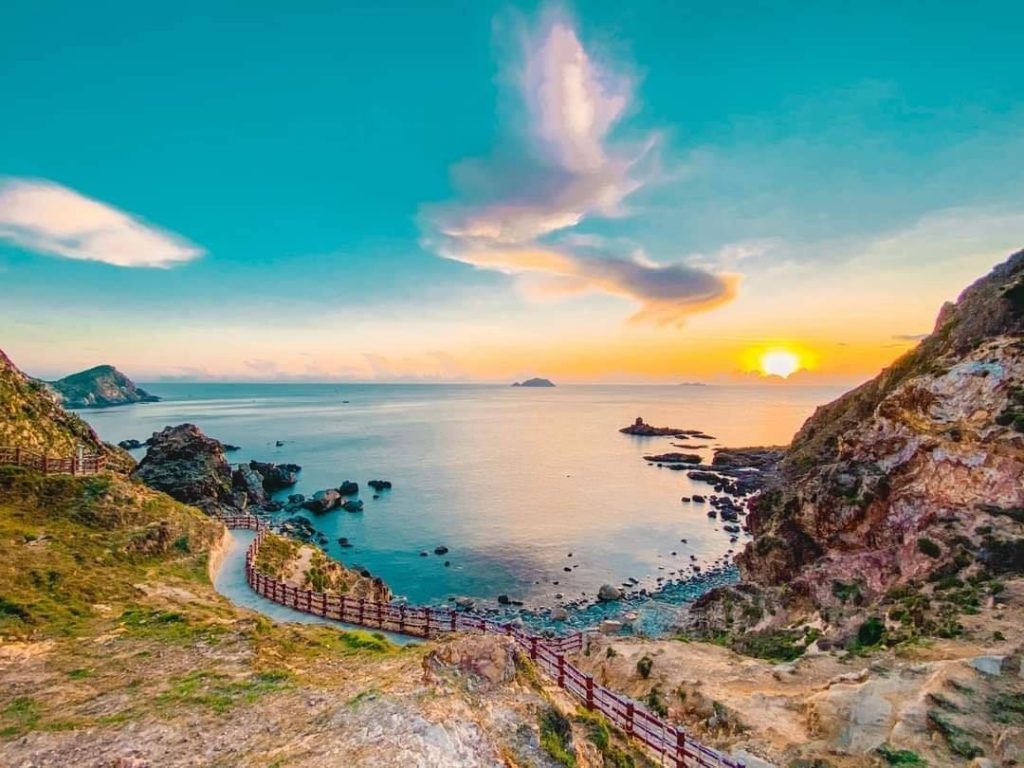
The ancient city of Hue was the capital of Vietnam during the Nguyen dynasty at the beginning of the 19th century and during the Vietnam-US war some of the most intense conflicts took place in this region. One of the main tourist attractions of Hue is the Royal Palace of the imperial city. There are also a number of places of interest left over from the Vietnam War, such as a military base and tunnels in the DMZ.
Recommended days to stay
Most of the temples and city you can see within one day. You can choose to stay another day or two if you want to make a day trip to the DMZ or Bach Ma National Park.
ATM’s & money exchange
Hue is a big city, there are plenty of ATMs to be found.
Local events and holidays
- Hue Festival: This art festival is held in even years with local and international artists at historic buildings, street parades, sampan races and markets.
Best time to visit
- The best travel time: From January to April, with 20 to 25 degrees and almost no rain.
- Dry season: The complete season that there is little or no rainfall is from March to August.
10 best things to do in Hue
The city is a beautiful mix of old and new buildings that are mainly separated by the Parfume River. Hue was the imperial capital of Vietnam between 1802 and 1945. Although many beautiful buildings have been lost as a result of the wars, Hue is busy restoring various highlights in the city.
1. Hue Imperial Citadel
Without a doubt, the most impressive and best thing to do in Hue is a visit to the Imperial City. In the walled Hue Imperial City, also known as the Citadel, you will find the Forbidden Purple City, dozens of royal tombs, pagodas, temples, royal rooms, a library and a museum.
You can easily walk around here for 3 hours to visit everything. A guide is not necessary but recommended if you want to learn more about the history and the times when there was fierce fighting here during the Vietnam War.
2. Lang Co beach
One of the best beaches in Vietnam can be found close to the city of Hue. The beach is 10 kilometers long with palm trees, clear water and a number of good resorts. It is still a 60 km drive from the center. You can also choose to stay here for a night, a day trip or a stop on the way between Hue and Da Nang just before the Hai Van Pass.
3. Tombs and temples
Besides the Imperial City, you can find many other tombs, temples and pagodas in and around the city of Hue. The tombs of the emperors of the Nguyen Dynasty are scattered on hills south of the city and can be reached by boat or bicycle. In total there are seven tombs: the other emperors died in exile and were buried.
The best known and most impressive are the Minh Mang Tomb, Tu Duc Tomb, Hon Chen Temple and The To Mieu Temple.
4. Hai Van Pass
The Hai Van Pass is located between Hue and Da Nang and is one of the most stunning coastal roads in Vietnam. It is very popular to drive the road by motorbike (or on the back of one), but you can also go by car or an old army jeep. The views along the way are spectacular and you can combine to drive with a visit to some other sights along the way, such as Lang Co beach, fishing villages, the Marble Mountains and a small waterfall.
- Tip:Excited to go? Check out our Hai Van Pass tours here, including behind on the motorbike of an Easy Rider, a comfortable car or by military jeep!
5. Bach Ma National Park
Bach Ma National Park is an old French hill station that extends over 40,000 hectares and offers great hiking trails, dilapidated French villas, waterfalls, a campsite and lots of wildlife.
The best way is to go on a Bach Ma national park trekking tour through the forest. There are several routes to choose from. The nicest routes bring you along some small lakes and waterfalls. Also make sure to visit the peak with amazing views over the forest.
6. Dong Ba market
Dong Ba market is the largest market in Central Vietnam and is the perfect place to see the local life. It is a lively market hall where you can buy handicrafts, vegetables, fruit, meat and clothing.
The market is not far from the citadel and on the Perfume River, so you can easily combine a visit with other sights. Walk around the market to watch locals negotiate and get their daily groceries. It is a unique and above all authentic experience.
7. Dragon boat trip on the Perfume River
The perfume river flows through the middle of the city and can be a relaxing break from city life. Boat trips, pedal boats and dinner cruises are available.
The best way to discover the river is by a dragon boat ride – they are not to be missed. From the boat you can see the local life on shore and the fishermen and transport boats on the water. There are also a number of riverside temples that you can visit on a dragon boat tour.
8. Cycling
With less traffic than other major cities, Hue is arguably the best city for cycling in Vietnam. Many tourists choose to ride a bicycle along the banks of the Huong River, to the Citadel. You can also visit a number of temples a little further from the center. Some accommodations lend bicycles for free, otherwise you can rent a bicycle cheaply in the center of the city.
If you are a fanatic cyclist, you can also choose to cycle out of the city and explore the quiet countryside. You can also take a bike tour through Hue countryside so a guide can show you the way. It’s a very calming experience, and quite authentic, as you pass through areas where few other travelers go.
- Tip:If you prefer not to cycle yourself, you can enjoy a traditional cyclo ride. A cyclo is a three-wheeled bicycle taxi that appeared in Vietnam during the French colonial era. Local Vietnam offers various cyclo rides in Hue. View all tours in Hue here to see your options.
9. DMZ
During the Vietnam War, there was fierce fighting in the city of Hue, which damaged many historic buildings. But the city is also adjacent to the DMZ – Vietnam’s Demilitarized Zone. Here you will find the border between the former North Vietnam and South Vietnam. There are still a number of sights that you can visit in this area where you can get an idea of how it went. On a tour of the DMZ you usually visit the Hien Luong Bridge which is right on the border, an abandoned American base with abandoned vehicles and the Vinh Moc Tunnels, a tunnel system where an entire village lived to shelter from the bombs.
- Tip:If you want to see this area, have a look at our DMZ tour by small group. If you are also planning to go to Phong Nha after or before Hue, you can also do a sightseeing transfer through the DMZ between these two destinations.
10. Hue abandoned water park
Photography enthusiasts and urban explorers will want to go here. Ho Thuy Tien is a small abandoned water park on a lake not too far from the city.
The water park has been abandoned for over 10 years. Certain parts are ruins, overgrown and broken, it feels a bit like you’ve walked into a horror movie. In the middle of the lake is a dragon’s head, the main attraction. All around you will find empty swimming pools and dirty slides.
It is not an official tourist attraction and in some places there is glass on the floor, so watch out and don’t wear flip flops.
Best hotels & hostels in Hue
Where to stay
The best area to stay in Hue is the city center, in the area closest to the imperial city, the main attraction of Hue, located on the banks of the river. Here you will find the vast majority of hotels in the city. The area also offers a wide variety of restaurants, bars and shops nearby.
Best hotels & hostels in Hue
Budget hotels & hostels
- Hue Happy Homestay
- Sunny A Hotel
- Jade Hotel Hue
- Hong Thien Ruby Hotel
Mid range hotel
- Beaulieu Boutique Hotel
- The Scarlett Boutique Hotel Hue
- Moonlight Hotel Hue
High end hotel & resort
- Pilgrimage Village Boutique Resort & Spa
- Vedana Lagoon Wellness Resort & Spa
- Indochine Palace Hotel
Food & drinking
Restaurants
Hue is known for its imperial cuisine, originally prepared for the emperor. Although the food emphasis more on presentation than on taste, an imperial banquet is worth it. If you are a street food lover, then Hue is also the right place for you.
- Serene Cuisine Restaurant
- Risotto Restaurant
- ZUCCA Restaurant
- Golden Rice
- Elegante Restarant
- Madam Thu Restaurant
- Family Home Restaurant
- Nina’s Cafe
- Les Jardins de La Carambole
- Hanh Restaurant
Nightlife
There is is a lot to do at night in Hanoi. You can join the locals with a beer on the street, go clubbing, chill in a bar or enjoy a impressive performance in the Opera House.
- Explore the illuminated sights in the evening
- DMZ Bar
- Why Not? Bar
- Secret Lounge Hue
- Le’s Garden Hue
- Brown Eyes Bar
- One For The Road
How to get there
Lorem ipsum dolor sit amet, consectetur adipiscing elit. Ut elit tellus, luctus nec ullamcorper mattis, pulvinar dapibus leo.
Flights to Hue
Hue has a small international airport, with daily flights from Ho Chi Minh City and Hanoi. Hue’s Phu Bai International Airport is currently served by Vietnam Airlines, Vietjet and JetStar Pacific.
Buses to Hue
Hue is connected by bus to other cities in Central Vietnam. Buses run daily from Hoi An and make the journey to Hue in about three and a half hours. There are also daily buses from other cities, such as Ninh Binh, Phong Nha, Dong Hoi, Da Nang and even from Ho Chi Minh City and Hanoi.
Trains to Hue
Hue train station is one of the many stops on the Hanoi to Ho Chi Minh City train route that goes through the largest part of Vietnam. The train journey from Hue to Da Nang is a very beautiful route that is even worth doing as an excursion.
Private transportation
A great alternative is getting private transportation. The route between Hue and Da Nang/Hoi An goes over the Hai Van pass, a stunning coastal road. On the way there are a few sights that you can visit too.
If you go north to Phong Nha, you can visit the sights that are located in the DMZ.
You can either go by Easy Rider or private car for both routes.
How to get around
Taxis are everywhere in Hue, although there are a few that take you on a rather detour if you don’t know the area. To prevent this, look out for the Green Mai Linh or yellow Taxi Vang, which use both meters.
Cyclos and motor taxis are very popular. Drivers will name an amount they think they can get, so you have to come up with a price that you think is reasonable.
Cycling is best suited for those who want to visit the sights themselves in and around the center of Hue. There are numerous hotels with bikes and bicycle shops.
Itinerary 2 days in Hue
Day 1
The first morning in Hue you start with a walk around Hue Citadel and the imperial city. In the afternoon you rent a bike or a motor-taxi to the Thien Mu pagoda along the romantic Perfume River. If you have more time, you can cycle even further. At night you take a boat trip along the Perfume River, where you can enjoy live music.
Day 2
Take a day trip. Choose to go through the DMZ and visit the Vinh Moc Tunnels and the Khe Sanh Combat Base.
Or make a trekking in Bach Ma national park.
Make your plan to Vietnam right now by apply a Vietnam visa at vietnamvisapro.net. We, a reputable and reliable Visa service, will assist you turn your plan into reality at the very first step.


